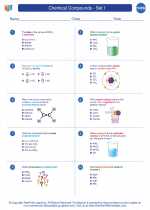Homo
In chemistry, the term "homo" is a prefix used to denote a type of compound or substance that contains identical or similar components. This prefix is derived from the Greek word "homos," meaning "same." It is commonly used in organic chemistry to describe molecules that have the same or similar chemical groups or elements repeated in a chain or structure.
Homoatomic Molecules
Homoatomic molecules are those in which all the atoms are of the same element. For example, diatomic molecules like oxygen (O2) and nitrogen (N2) are homoatomic because they consist of two identical atoms of the same element.
Homopolymer
A homopolymer is a polymer that is composed of only one type of monomer. This means that all the repeating units in the polymer chain are identical. An example of a homopolymer is polyethylene, which consists of repeated ethylene monomer units.
Homozygous
Outside the realm of chemistry, the term "homo" is also used in genetics to describe homozygous traits, where an individual carries two identical alleles for a particular gene. This concept is important in understanding genetic inheritance and traits.
Study Guide
When studying the topic of "homo" in chemistry, it is important to understand the following key points:
- The meaning of the prefix "homo" and its significance in describing compounds and substances.
- Examples of homoatomic molecules and their significance in chemical bonding and reactivity.
- The concept of homopolymer and its relevance in polymer chemistry and material science.
- Understanding the term "homozygous" in genetics and its implications in heredity and genetic traits.
It is also helpful to practice identifying and classifying compounds and molecules based on the presence of the "homo" prefix. Additionally, understanding the structural and functional implications of homoatomic molecules and homopolymers can aid in grasping their significance in various chemical and industrial applications.
Remember to review and practice these concepts regularly to ensure a strong understanding of the topic "homo" in chemistry.
[Homo] Related Worksheets and Study Guides:
.◂Chemistry Worksheets and Study Guides High School. Chemical Compounds - Set I

 Worksheet/Answer key
Worksheet/Answer key
 Worksheet/Answer key
Worksheet/Answer key
